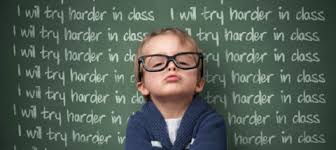When I started my Martial Arts/Self-defense odyssey some 40 years ago, I was obsessed with getting better and I thought the main way to do so was train a lot and with a lot of instructors. Just find the best teachers, and do whatever it takes to be able to train with them. As a ridiculously poor college student, I was scrimping pennies and selling blood and plasma to get enough money to make monthly trips to southern California to train with top people for an entire weekend, from Friday night to late Sunday afternoon. Then when I got back, my life revolved around blocking out time to train and practice what I learned, and even to teach. I passed up going to parties at times, or seeing cool local bands like the Gin Blossoms at local clubs, or even ticking off women I was dating who could not understand why I could not meet them at the bar on Tuesday night because I had a three hour session of sparring and hitting the thai pads. I even quit my part time job at Kentucky Fried Chicken, where I had worked for four years and could write my own schedule, because it was starting to interfere with my workouts.
Then after a bit of maturity and seasoning by life, I realized that pathway was not available or even applicable to most people, myself included. Getting married, having kids, having to work to make money and keep a roof over my family’s head or food on the table tended to take needed time and energy away from training. So I began to realize that the way to long term success had more to do with consistency, and the idea that just putting time in and punching the clock allowed you to make that trip down mastery while staying in the real world. If all you could do was go to the gym once a week, then go to the gym once a week no matter what, and put in 100% effort. And that would keep you moving down the path. It might take you far longer to get “good” than your buddy who goes to the gym five days a week, but who cares? His journey is his, and your journey is yours. The important thing is to keep going.
Now, I still think this plan is correct, but as I continue down this road, I realized it lacks some nuance. The part I think I fell down conceptually on is the effort aspect. While putting in 100% is ideal, the fact is that life has a tendency to get in the way. After a really tough day at your job, with clients yelling at you, and your boss riding your posterior, and worrying about how your kid is doing in school, and why your wife has seemed so distant the past few weeks, can you truly put in that full effort? Of course not, it is impossible for almost anyone.
So I have come to the conclusion that the only realistic way to get better at almost anything is this – JUST SHOW UP. Go and show up at the gym, or the golf course, or pick up that musical instrument, or get to the shooting range, and do the best you can. If one day the best you can muster is just going through the motions, fine. Don’t let that impact the effort to go to the next session. Again, just show up. Put in the maximum effort that you can muster, and keep at it. You might be going through a long plateau or valley where it seems like you will never get better or have total focus, but that day will come AS LONG AS YOU KEEP SHOWING UP. The day you don’t show up is the only day of failure. And more importantly, each day you miss makes it easier to get knocked off that journey to mastery.
This is not an excuse to be lazy. It is not a get out of jail free card to excuse you from putting in the work. Not at all. You are still trying as hard as you can, but you accept that some days the best you can do is 20% effort. Keep plugging away, and you will improve in time. Don’t quit.

